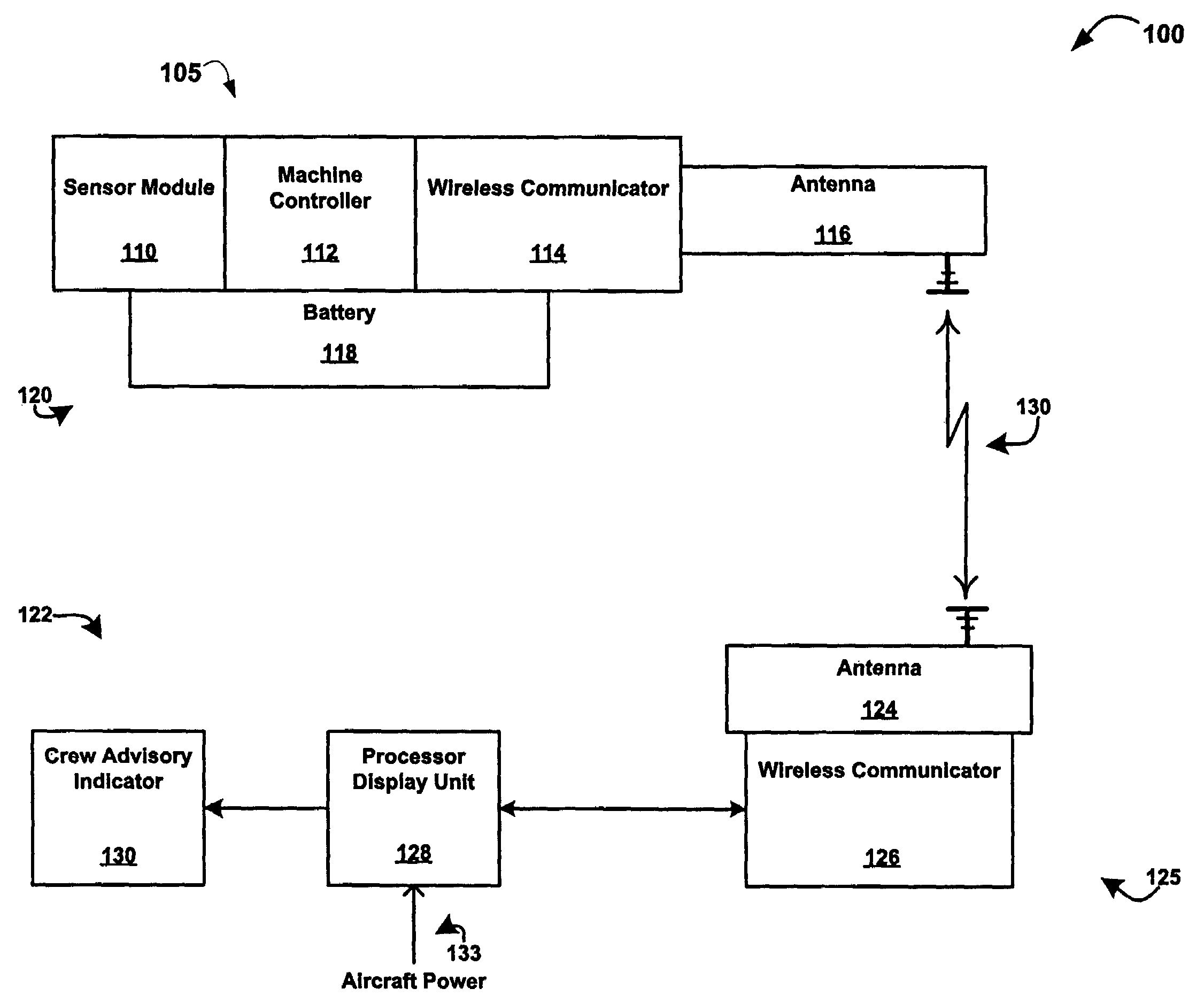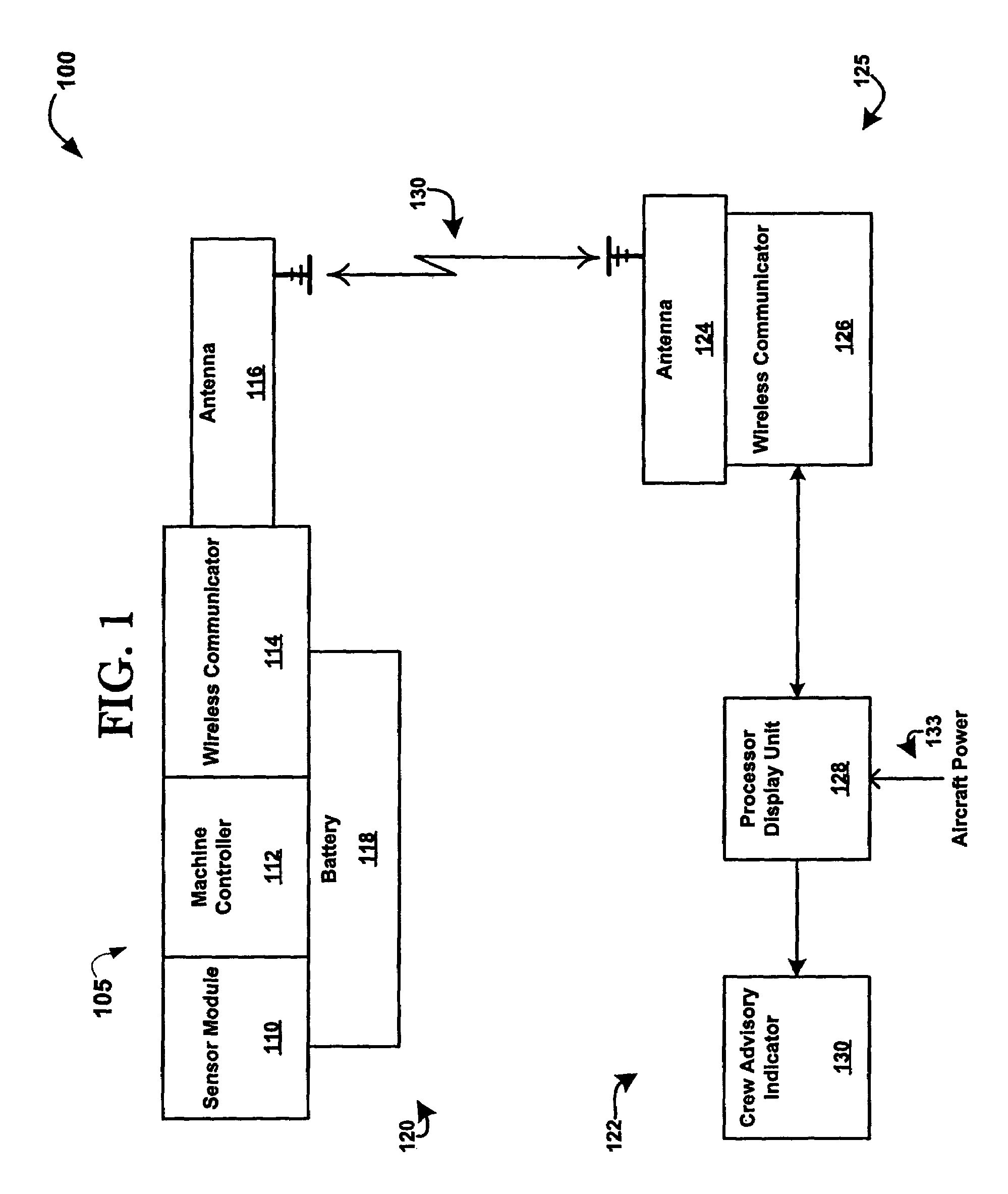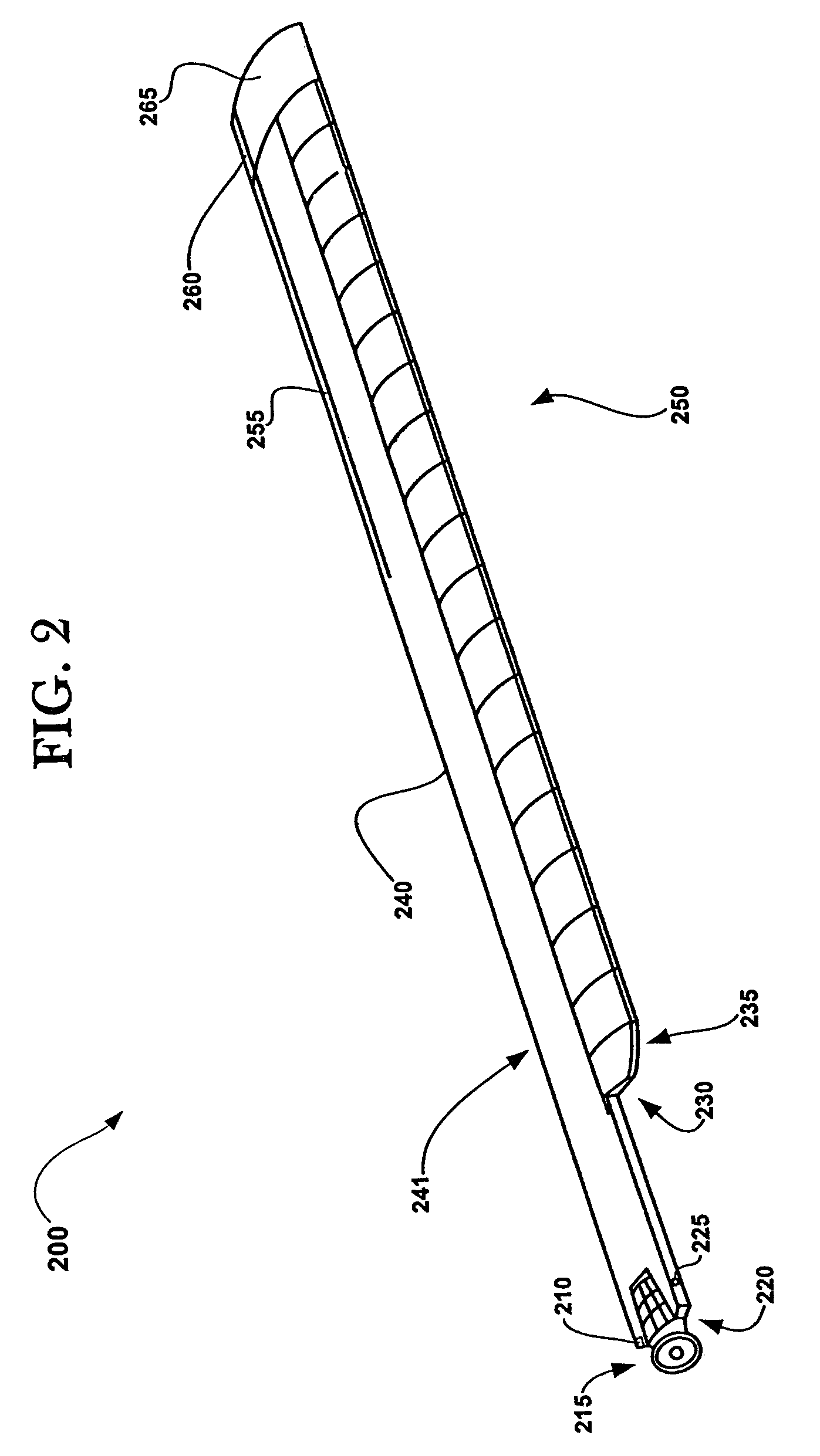Wireless blade monitoring system and process
a monitoring system and wireless technology, applied in the direction of instruments, marine propulsion, vessel construction, etc., can solve the problems of blade spar failure in flight, rotor blades have a finite operating life, and are rendered unusable, etc., to achieve high reliability, enhance flight safety, and low cost
- Summary
- Abstract
- Description
- Claims
- Application Information
AI Technical Summary
Benefits of technology
Problems solved by technology
Method used
Image
Examples
Embodiment Construction
[0015]While the following discussion illustrates preferred embodiments of the present invention, it does not limit the present invention from being implemented (and / or configured) in a myriad of other manners within the spirit and scope of this Application. Moreover, while the devices, software, circuits, and / or other components used in the present invention preferably come from the group of devices, software, circuits, and / or other components that are well-known, and / or are commonly (or readily made) available, other means of implementing the present invention may also be used as well. Moreover, the use of the terms “machine controller,”“processor” or “CPU” in any of their forms herein, should be construed to encompass the myriad of processing devices currently available, or which may become available in the future. For example, but not as a limitation, the machine controllers, processors and / or CPUs described herein, for use in the present invention, may include, but are not limit...
PUM
 Login to View More
Login to View More Abstract
Description
Claims
Application Information
 Login to View More
Login to View More - R&D
- Intellectual Property
- Life Sciences
- Materials
- Tech Scout
- Unparalleled Data Quality
- Higher Quality Content
- 60% Fewer Hallucinations
Browse by: Latest US Patents, China's latest patents, Technical Efficacy Thesaurus, Application Domain, Technology Topic, Popular Technical Reports.
© 2025 PatSnap. All rights reserved.Legal|Privacy policy|Modern Slavery Act Transparency Statement|Sitemap|About US| Contact US: help@patsnap.com



